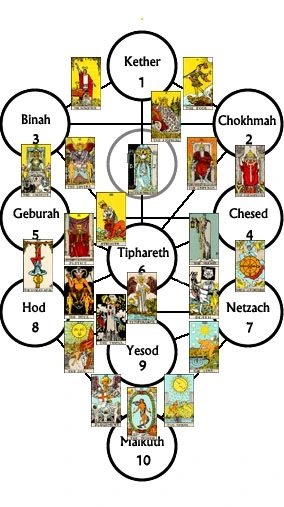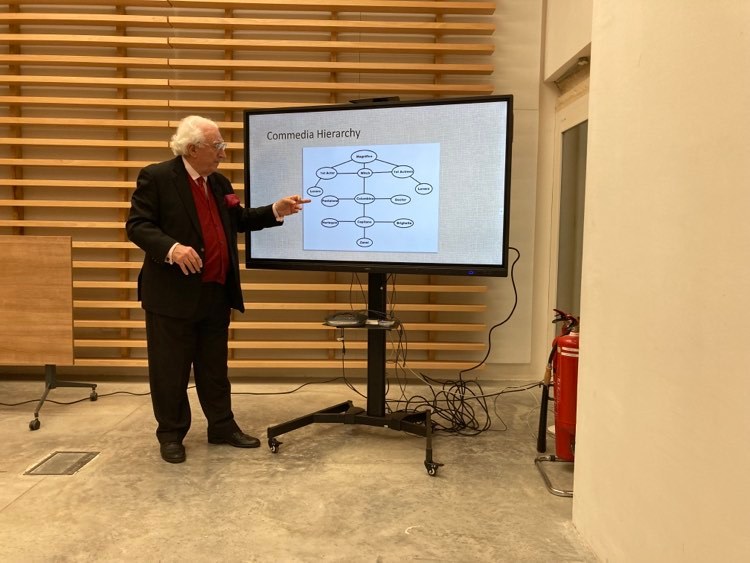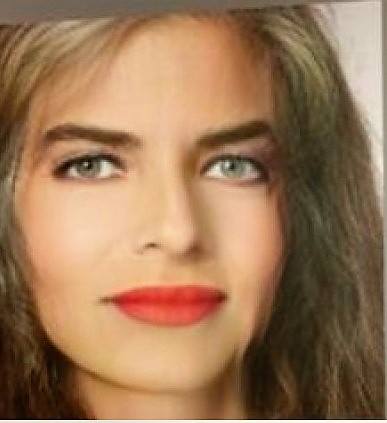Italian Theatre Shamans
Learning from Lecture The Maltese and La Commedia Dell’Arte Art, Education, Symbols and SignsAncient Theatre art symbols
by Nataša Pantović
Theatre is one of the oldest way of expression. It was at first a religious expression, meant to communicate with the Gods. A Scottish friend of mine Nicholas Jackman acted Macbeth, in the Shakespeare’s performance, at the Valletta’s Manuel Theatre this weekend. To be true to the play, at the time of our ancestors, the actors did believe in the witches they portrayed. To the audience, witches were a fact of life, real force manifestation, as real as the Hamlet’s ghost of his late father. That is why it is the most difficult to act a mad man.
In traditional societies the first shamans were our first actors. They improvised, channelling subconscious states. What psychologist Jung found in alchemy (transforming metal into gold) is a precursor guide to the psychology of humanity.
The World of Commedia dell'Arte & Tree of Life by National Theatre UK
The Tree of Life was originally a Babylonian idea and represents a system of 10 aspects (seferit) of God’s nature linked in 32 paths. The ancient planetary beliefs connect with the Gods, the typology of people map Kabbalist Tree of Life, attempting to apply psychology in the process of manifestation of 4 elements. In Kabbalah the tree of sefirot, or the Tree of Life, is often presented as “the divine trunk” that represents Adam.
The tarot is a pack of playing cards, used from at least the mid-15th century in various parts of Europe to play card games and for deviation.

A breakdown of the tree is within the:
1. Unknown Muse. The Kabbalah connection is the source of creation. at the crown of the head. It forms the head of the first triad God / Father / Holy Spirit.
2. Consciousness, or Being Present. the right side of the brain; the left side of the body.
3. Mind. The ability to enter mental states: beliefs, desires, intentions, establishing archetypical patterns; the left side of the brain; and the celestial Saturn.
ToM completes the Soul triad, and is the gateway to the Heart triad.
4. Buoyancy. It receives wisdom and understanding from the Soul triad, creating Poetical Expression,
During the Renaissance, visualizing letters & colour was a practice during kabbalistic meditation. The Deity was seen through the sefirot in color.
5. Melancholy, Associated with War.
6. Collective Conscious. It is the marriage of audience, performer, and story, the Soul triad. the sun and light, the heart / solar plexus; and the celestial Sun.
7. Perspiration. It begins the Body Triad, receiving its wisdom from the Soul and Heart Triads.
8. Inspiration. It is beauty and grandeur.
9. Force. It is thesacral center; and the celestial Moon.
10. Ethos. It represents the physical world, the artist and poet. It is referred to as “Earth-Shaker”.
Greek theatre had its origins in religious ritual.
The god Dionysus, often associated in modern minds only with wine and revelry, is also depicted as a musician.
Our interest in occult, gnostic, and kabbalistic mythology was part of the myth creation.
800 BC - Homer (as the name suggests the Main Scribe of the King and Priests) composed (compiled and collected) Ancient Greek poems. His original work is the Iliad and the Odyssey.
Ancient Greek theatre was a theatrical culture that flourished in ancient Greece from 700 BC.
Nearly every Greek and Roman city had an open air theatre, the seats arranged in tiers. The ancient Greeks loved live theatre. These theatres attracted crowds of 15,000.
What did the Ancient Greek playwrights use as inspiration for the stories that they told?
Greek mythology originated as oral narrations, or poems told out loud. The ancient Greeks told their myths over and over again before they were written down.During the Golden Age human speech was Magic, and humans were able to communicate directly with Gods. Through their artistic expression poets could become the Deity. Poetry was occult knowledge and the poet a creator.
Historically, Kabbalah emerged from earlier forms of Jewish mysticism, in 12th- to 13th-century Spain and Southern France,The Qabalah appears to be very influenced by Greek philosophy such as Neo-Platonism and the Pythagorean number mysticism
Using dramatic masks to outline his characters' motivations, states of mind, and thoughts, actors created the stories.
Tragedies were also often played out alongside annual rituals undertaken by the Ancient Greeks to honour Dionysus. Citizens would wear masks.
There were twelve principal deities in the Greek pantheon. Foremost was Zeus, the sky god and father of the gods, to whom the ox and the oak tree were sacred.
The Ancient Greek Muse is a female force that is according to the mythology the source of inspiration for any artist. Interestingly there are nine Muses: Urania (astronomy), Erato (love poetry), Polyhymnia (sacred poetry), Terpsichore (dance) Thalia (comedy), Melpomene (tragedy). Clio (history), Calliope (epic poetry), Euterpe (flutes and lyric poetry).
Dr Sir Narcy Calamatta KM
I have just visited a Public Lecture: The Maltese and La Commedia Dell’Arte organised by The Institute of Maltese Studies with the support of the Valletta Cultural Agency that discusses the Late Renaissance theatre tradition of Commedia dell'Arte in Malta.

Calamatta published his plays and a dissertation on Commedia dell’Arte in a book in English and a translation of the same in Maltese.
The commedia dell'arte was a form of popular Italian theatre that emphasized no script and improvisations, however set in a firm framework of masks and stock situations.
Professional players who specialized in one role travelled throughout Europe.
The commedia dell’arte emerged in 16th-century Italy and its origins must have been pre-classical and classical Greek or Italian mime.
Professional companies with strolling players, acrobats, singers, street entertainers speaking common people dialects, the previous commedia erudita was in Latin, not easily comprehensible to the general public. It was the actors who created atmosphere and convey character with little or no scenery nor costume.
Each commedia dell’arte company had a stock of scenarios, most players created their own masks or developed ones already established.
Commedia del'art Zanni during his visit to Malta
Some of the masks, or characters:
Pantalone was a Venetian merchant.
Dottore Gratiano was, in origin, a Bolognese lawyer or doctor.
The Capitano developed as a caricature of the Spanish soldier
Pulcinella, was a character in his own right, The zanni (Janni or John in Arabic) as comic
The commedia dell’arte is now dead art.






Italian Theatre Shamans No comments on Italian Theatre Shamans: